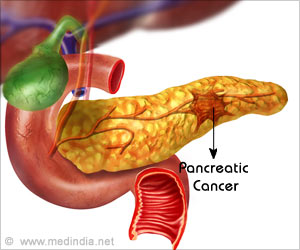University of North Carolina experts have revealed that an implantable device can deliver a particularly toxic cocktail of drugs directly to pancreatic tumors.

‘The prospect of halting tumor growth with an implantable device developed at the University of North Carolina, and potentially shrinking tumors, could help more patients qualify for surgery.’





"We use the device to hit the primary tumor hard," said UNC Lineberger Comprehensive Cancer Center member Jen Jen Yeh, M.D., who is also an associate professor in the UNC School of Medicine Department of Surgery and Department of Pharmacology. "It’s an exciting approach because there is so little systemic toxicity that it leaves room to administer additional drugs against cancer cells that may have spread in the rest of the body." The work, published Feb. 8 in the Proceedings of the National Academy of Sciences, highlights the cocktail FOLFIRINOX, a combination of four chemotherapy drugs that has been shown to shrink tumors or halt their growth in nearly a third of pancreatic cancer patients. It’s one of today’s first-line treatments for pancreatic cancer, but it is not suitable for all patients due to its degree of toxicity when delivered through the bloodstream. The new device, currently tested in mice, delivers the drugs directly to the tumor, providing a viable alternative to sending this toxic cocktail through the bloodstream, limiting harsh effects throughout the rest of the body.
"We are striving to get our device into clinical trials within the next several years," said Joseph M. DeSimone, Chancellor’s Eminent Professor of Chemistry in UNC’s College of Arts and Sciences and William R. Kenan, Jr. Distinguished Professor of Chemical Engineering at NC State University. "The prospect of halting tumor growth with our device, and potentially shrinking tumors, could help more patients qualify for surgery." Surgically removing a tumor is currently the best chance of cure for patients with pancreatic cancer, but only 15 percent of patients have operable tumors.
The findings are the latest for the researchers in the testing of the implantable device, which uses electric fields to drive the chemotherapy drugs directly into tumors. In a study published last year in Science Translational Medicine, the team showed, for the first time in animal models, that the device could be implanted on top of pancreatic tumors to increase the amount of the cancer drug gemcitabine reaching them. The tumors stopped growing and shrunk, providing more favorable conditions to remove the tumor and cure the disease.
The discovery was hailed as a big advance for the treatment of pancreatic cancer, which has a 75 percent mortality rate within a year of diagnosis - a statistic that has not changed in more than 40 years.
Advertisement
"The beauty of this device is that all of the drug delivery is focused locally, with low delivery to the rest of the body," said James D. Byrne, Ph.D., the paper’s first author and a current medical student at the UNC School of Medicine. "If this works in humans, we hope the device can be used as a plug-and-play approach to delivering the latest, most promising drug regimens for patients who have a dire need for new and better treatments."
Advertisement













